Protect your pool against the sun’s harsh rays with pool solar covers. This type of cover will protect your water and the chemicals within from being evaporated and depleted by the sun and heat. But don’t just buy any cover. Choosing the right color and thickness will make all the difference to your pool water. Keep reading to find out more.
How a Solar Cover Works
A pool solar cover, placed bubble-side down, provides a dual purpose. First, the cover will absorb the heat energy into the plastic, and heat-up the air-filled bubbles. The solar energy is then transferred to the water, by the simple act of conduction.
The second purpose of a pool cover is to prevent evaporative heat loss. An uncovered pool loses surface heat at a rapid rate, especially during cool nights. For many pool owners, stopping heat loss is a major benefit of using a cover. Research has shown pool solar covers are 95% effective in stopping heat loss and water evaporation.
Another benefit to using a cover is prolonging the effectiveness of water chemicals. It reduces chemical degradation from UV radiation by absorbing the radiation and shielding the pool water. Additionally, pool solar covers also protect against off-gassing of chlorine at the surface.
Does Color Make a Difference?
The color of your pool solar cover makes more of a difference than you might think. There are many colors of solar blankets now available, in light blue, dark blue, silver/gray colors, and translucent clear blankets.
Clear Pool Covers
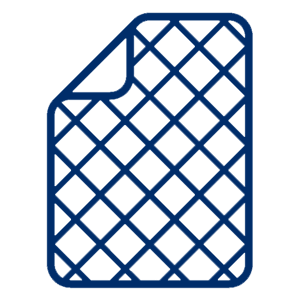
Clear pool solar covers allow more light energy to penetrate the water. Because of the easier passage of light through the plastic, these covers may absorb less heat than other colors. However, the heat gain provided by the clear cover is generally more than colored solar covers.
Clear covers transfer most of the UV light directly into the water. This will degrade chlorine levels near the water surface, resulting in the need to purchase chlorine more often.
Light Blue Pool Covers
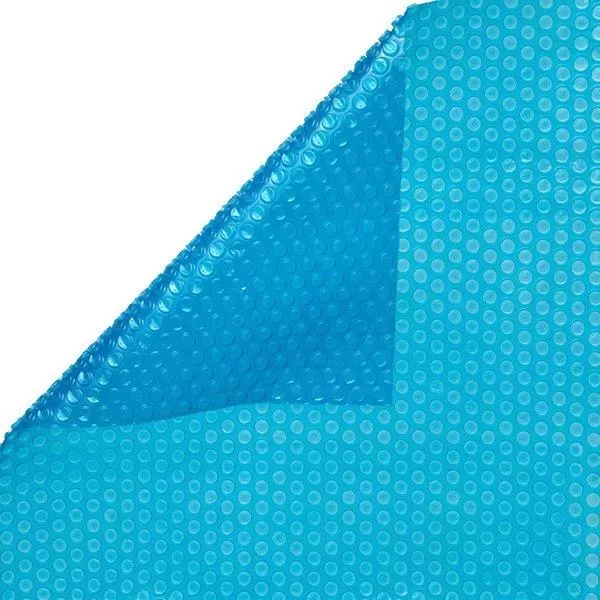
Light blue pool solar covers do a better job at trapping heat in the pool. As well as blocking UV rays more effectively, which conserves pool water chemicals.
However, light blue covers can block much of the heat trying to enter your pool. According to the U.S. Department of Energy, an opaque pool solar cover blocks nearly 2x the amount of pool-warming light energy, compared to a transparent cover.
Dark Blue Pool Covers
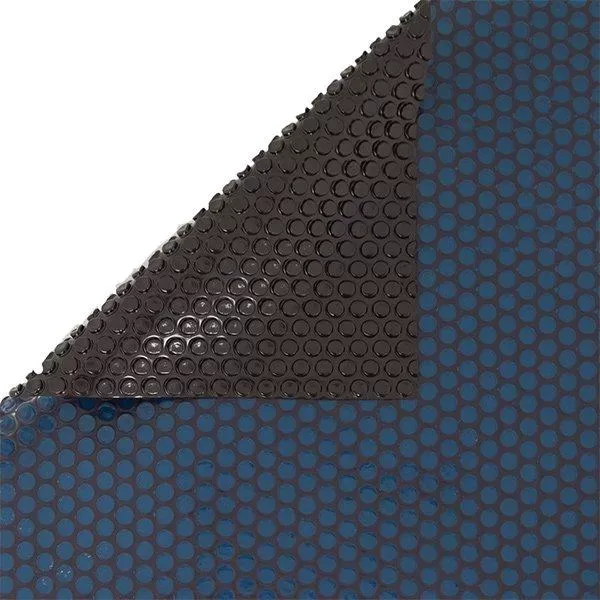
Dark blue pool solar covers do the best job at keeping heat in your pool. But although heat absorption is higher with a darker colored solar cover, the net heat gained during the day is less than with clear covers.
Thus, a clear pool cover would be the best to use for heat gain, and a dark blue color would be the best option for heat retention. Light blue pool solar covers appear to be a happy medium between heat absorption and retention. It’s also the most popular color.
If you only use a pool solar cover at night, go with a darker cover, and if you only use it during the day, go with a transparent color. Or for the best of both worlds, go with standard light blue pool solar cover.
Does Thickness Matter?
Pool solar covers can be found in 8 millimeter, 12 millimeter, or 16 millimeter thickness. In terms of performance, a thinner cover will allow more heat to pass through to the water, but a thicker cover will absorb more heat. Thicker covers are also more durable against UV rays, water chemicals, and punctures or tearing.
16 millimeter solar covers are usually quite heavy and can be a struggle to move on and off the pool. Long covers can make the reels sag in the middle, or roll up too thickly to fit on the edge of your pool. 12 millimeter covers are the perfect middle ground and are the most popular.
How Long Do Solar Covers Last?
The largest killers of pool solar covers are high chlorine levels and low pH levels in your pool water, and leaving it out in direct sunlight.
Never place your cover on the pool after shocking the pool, or when the chlorine level is above 2.5 ppm. High chlorine levels or low pH levels slowly eat away at covers, making them brittle.
Be sure to cover your blanket when it is off the pool, or place it safely in the shade. When folded on-deck or rolled upon a solar reel, air bubbles on the cover act as prisms to attract UV rays, which deteriorate the plastic bubbles.
When protected from sun when off the pool, and not used when chlorine levels are high — a solar blanket can last 5–7 years. Ironically, strong solar rays will eventually destroy a cover. If your pool gets 8 hours of direct daily sun, in the hotter parts of the country, you may only get 2–4 years of use, even with good care.
We hope this post has given you insight into what pool cover is best for you! Keep in mind what goal you have for your solar cover. Do you want to retain heat in your pool, or block it from entering in the first place? The color of the cover you choose may not give you the desired result, so choose wisely!

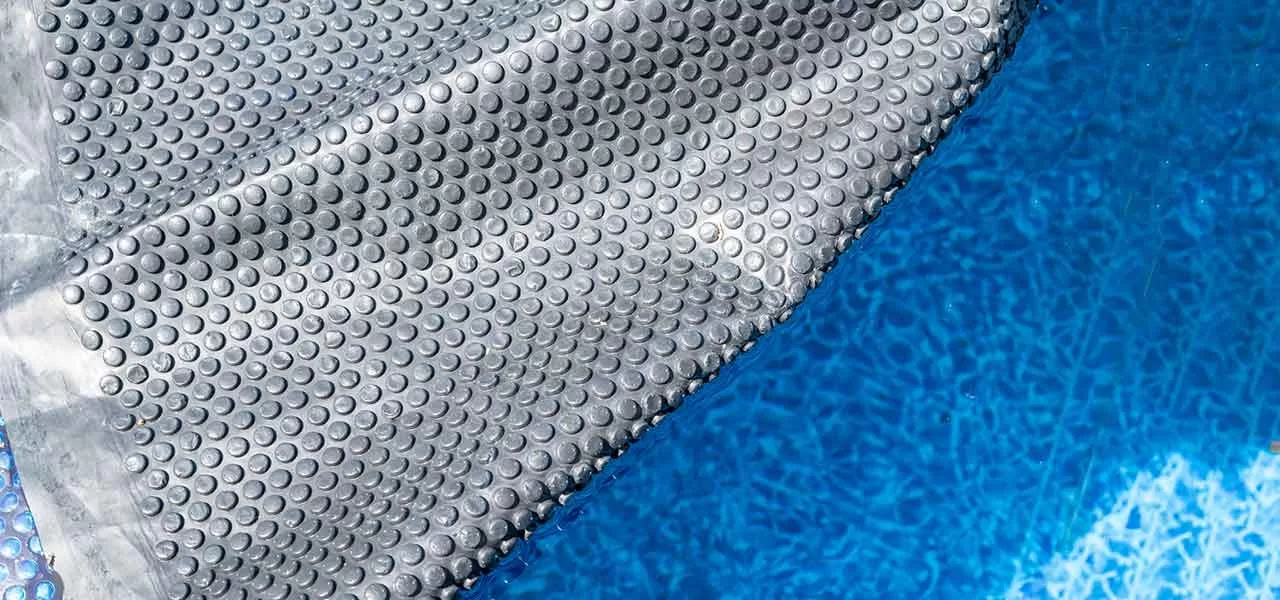
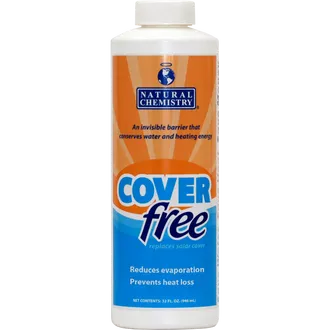
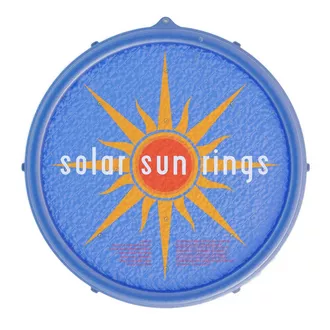

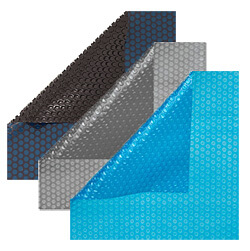

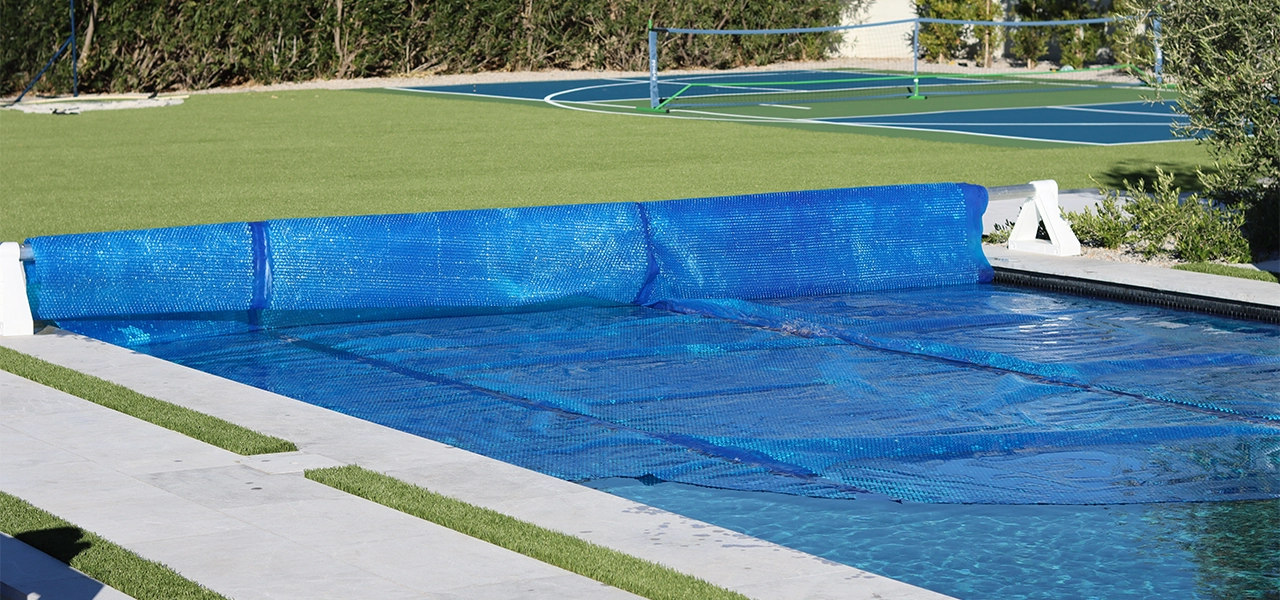
My pool is about 50-70% shaded most of the day so we rely on a gas heater. We typically have it uncovered during the day and cover at night. What color solar blanket do you recommend?
Well, if youonly cover at night, you are not interested in heat GAIN, but in reducing evaporative heat loss from the pool on cool nights. For this the blue/black or the ultra clear (which is actual grey/silver reflective) are best for trying to reflect back into the water, and standard blue is best for heating the pool, and not as good with retention.
Hi,
Just wondering which cover to use? I have 2, one black With no bubble wrap that covers the whole pool and a thin blue bubble one that sits on the water and is a little small. The black one generates a lot of heat between the water and the cover. The blue one doesn’t seem to do anything. I currently use them both at the same time. Not sure if this is better or worse.
Thanks
Thanks
Mike, I believe that the black flat film has better absorption, but reradiates more heat, where the blue bubble has more heat transfer and to a greater depth, so they both have some advantages. But I can’t see them used together, the blue relies on direct sun to focus the water like tiny magnifying glasses, into the water a few inches, and the black film would block sun either way.
Hi,
I’d like to transfer the most solar heat to the water. This week will be 85 degrees +. Live in SoCal. Kidney shaped pool circa 1960. Which cover will give me the most?
Hi Wolfgang, the light blue color is best for heat absorption, in the 12 mil size. And for the longest cover life, remove it from the pool when chlorine levels are high, and also when stored off the pool, keep the cover in the shade or covered. not folded or rolled and exposed to bright sun.
Heard running heater with solar cover on will make cover deteriorate quicker. True? If so is it best to buy cheapest?
Hi, no the heat from a heater won’t matter. The two things that do cause deterioration are high chlorine and/or low pH, and storing the cover in the sun. Always keep the cover off the pool after shocking, or when chlorine is above 2.0, or pH is below 7.0. Secondly, when removing the cover, either rolling on a reel or folding on-deck, keep it out of the sun by moving it to the shade, or covering the cover to block the sun. Ironic as it may sound, the sun can destroy a (folded or rolled) solar cover quickly because the top layers focus the sun’s rays to high heat, that they can actually burn the cover 2, 3, or 4 layers from the top. We have a poly tarp and a winter solar cover cover, that are meant to protect covers rolled onto a reel. If you don’t have a reel, try to fold and move the cover to a shady area, when it’s off of the pool during direct sun.
I added a pool clarifier because my pool was cloudy. I now realized I should have shocked it first as my chlorine is low but the bottle says to wait 48 hours. Do I really need to wait?
Hi Angela, a strong shocking will break apart the polymer chains used in many Clarifiers, sort of destroying the chemical, which is why they say to wait 48 hrs for the Clarifier to work, before shocking. Always be sure to not use a solar blanket after shocking the pool, which is damaged by high chlorine.